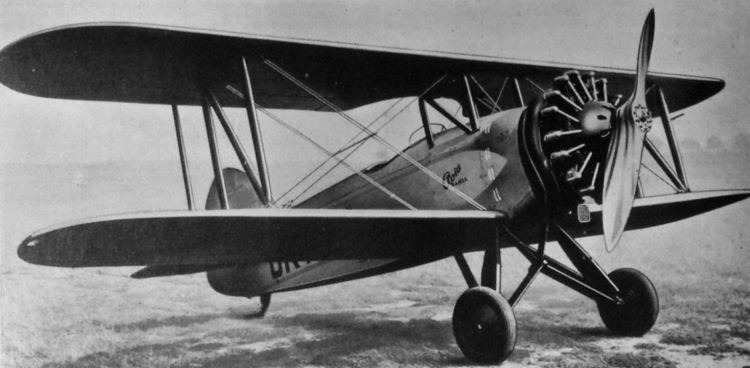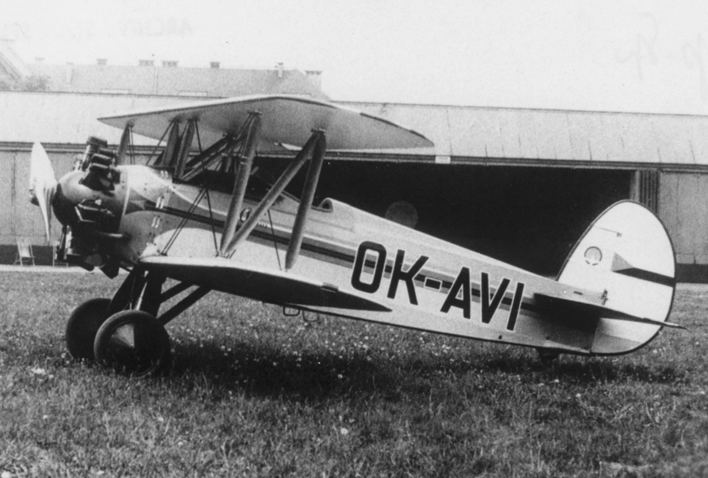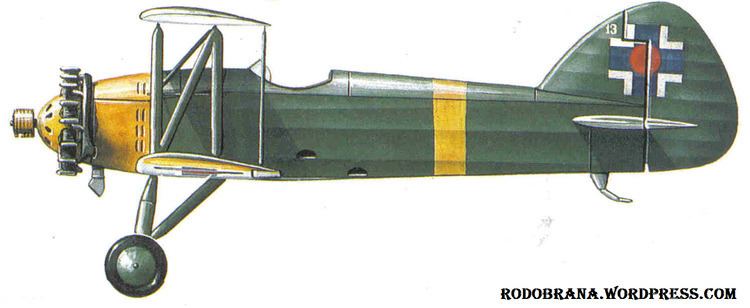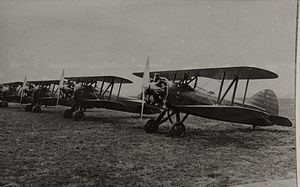Top speed 270 km/h Length 6.8 m | Wingspan 8.85 m First flight 1934 Designer František Novotný | |
 | ||
The Avia B.122 Vosa ("Wasp") was a Czechoslovak single-seat biplane trainer aircraft, which was developed in the mid-1930s. It saw some service in the first years of World War II.
Contents

History

In the spring of 1934 the Czechoslovak Army Command decided that some Czechoslovak Air Force pilots would participate in the international aerobatic competition Coupe Mondial. For this purpose, the Czechoslovakian aircraft manufacturer Avia was given a task to design and construct an aircraft. The prototype, B.122 was presented after a mere six weeks time.

The Czechoslovak pilots had only a few weeks to learn and master the aircraft as the competition was to be held in July 1934. Luckily, the design was quite successful and the Czechoslovak pilots managed to win the 4th and the 8th place in the competition.

Afterwards, the aircraft was modified, based on the pilots' inputs, and this resulted in the improved version Ba 122. The Ba.122 was equipped with a larger rudder and had a more powerful engine. This version went into production and 35 aircraft were built. In the 1936 Summer Olympics in Berlin, Czechoslovak pilots took 2nd, 3rd and 8th place with their Avias. Some of these aircraft were equipped with 9-cylinder Walter Pollux engines instead of the 7-cylinder Castor. 1937 was also a successful year, as the Avias managed to take 1st and 3rd place at the International Flying Meeting in Zurich in July/August 1937. These successes led to export orders from the Soviet Union and Romania. The aircraft was later further developed into the prototypes Ba.222, Ba.322 and Ba.422. The Czech Ministry of Defence ordered 45 Bs.122 trainers. However, the outbreak of World War II put an end to further development. Some Avias ended up in the German Luftwaffe when parts of Czechoslovakia were absorbed into Germany in 1939. Other aircraft were sold to the Slovakian and Bulgarian air forces.
Versions

Operators
Specifications (Ba.122)
Data from Jane's All the World's Aircraft 1938
General characteristics
Performance
